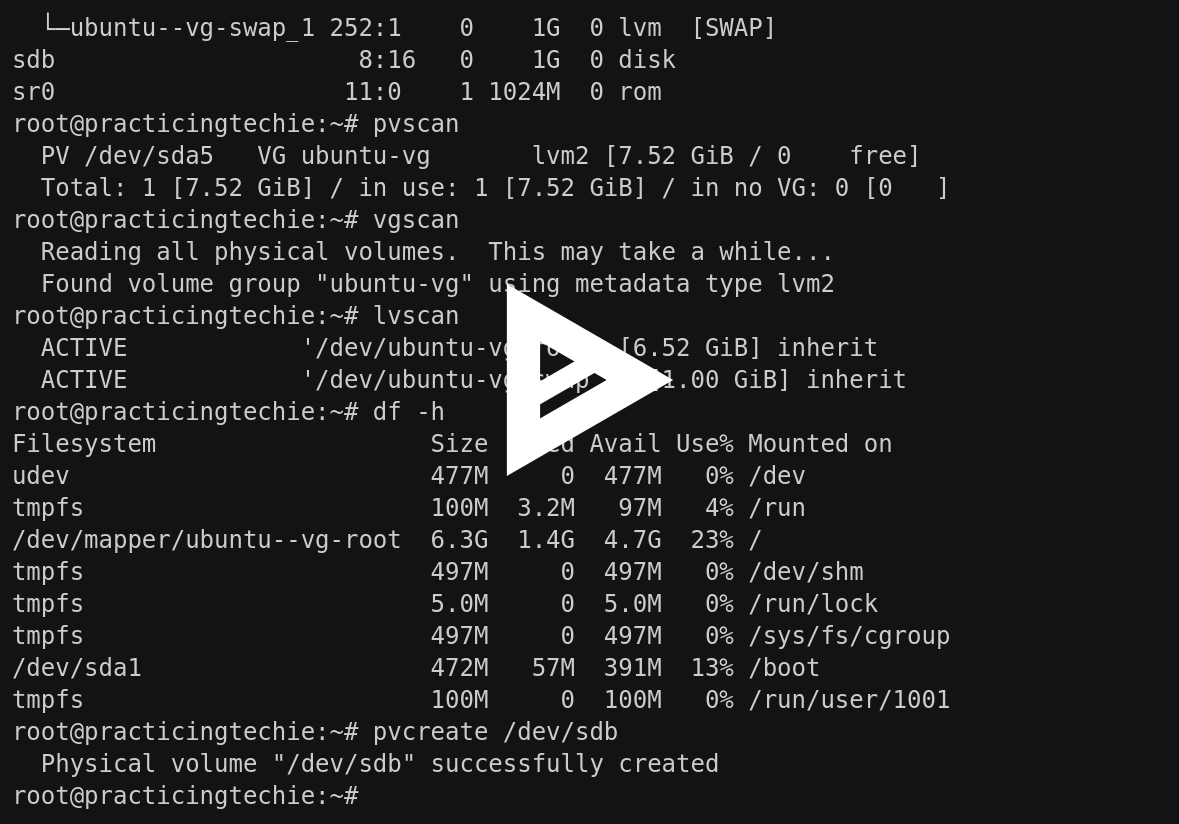Extending a LVM based file system
A file system running out of space doesn’t always have to be a major catastrophe. The problem could be quite easily resolved, if you happen to be running Linux and were foresighted enough to create your file system on a LVM volume. If you also happen to have extra storage space available, the file system could likely be extended in a fairly straightforward manner. Despite the procedure’s relative simplicity, it’s quite easy to forget the details if you perform it very infrequently. So, this time I’m writing this down.
In order to extend a LVM based file system, a new block device needs to be allocated for LVM. This can be done by adding a new physical disk, partitioning an existing disk or adding a virtual disk. Typically, reboot is required to get Linux to detect a new physical or virtual disk.
Once the new block device is detected, you need to identify its device path. This information can be obtained e.g. by using lsblk or sfdisk commands. If you’ve ran out of disk space you know which file system is causing the problems, but you also need to determine the LVM logical volume and volume group underlying that file system. These can be determined using output from df and lvdisplay (pvscan, vgscan and lvscan may also sometimes be helpful). In the snippet below we assume the block device path to be /dev/sdb, volume group ubuntu-vg and logical volume /dev/ubuntu-vg/root.
After you learning these parameters the LVM based file system can be extended as follows:
# initialize physical device to be used as a physical volume with LVM # (below we assume the newly added block device was "/dev/sdb") pvcreate /dev/sdb # add physical volume to volume group vgextend ubuntu-vg /dev/sdb # extend logical volume and file system lvextend -r /dev/ubuntu-vg/root /dev/sdb
Recently, I bumped into a tool called Asciinema, that allows recording and playback of terminal sessions. This differs from videos in that the terminal session’s input and output is recorded in a textual form, allowing you to e.g. copy-paste commands during playback. In order to try out the tool, I made a recording of extending a file system.
| Reference: | Extending a LVM based file system from our JCG partner Marko Asplund at the practicing techie blog. |





